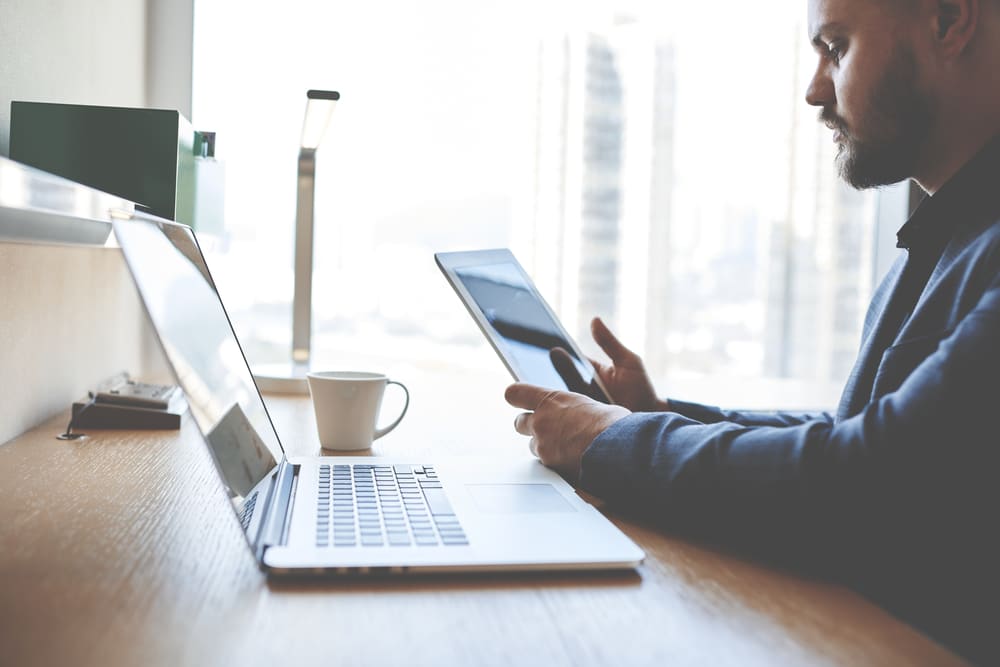For those on the go, whether traveling out of town or across town to run errands, it can be somewhat cumbersome to lug your laptop computer around with you. Of course, having a laptop is a far cry from not having anything 30 years ago, when the only choice available was a desktop computer at home or the office. While the ubiquity of laptops has freed us from the shackles of being tied to our desks, mobile devices are becoming more powerful. There are mobile versions of Microsoft Office and other applications that allow us to remain productive in a limited capacity, but who wants to create a five page report on a smart phone? There are solutions that allow those of us on the go to have the same power of desktops or laptops right at our fingertips. It’s called remote desktop.
What is a remote desktop?
Remote desktop capability is not a new concept. In fact, it’s been around for a number of years. Remote desktop capability allows users to remotely access a computer and operate everything within that environment from another device. Originally, this capability had been the domain of very sophisticated IT professionals who could enable remote servers to do this more than 20 years ago. In addition, support professionals utilize this capability when they need to have direct access to a person’s computer environment, even though they may be thousands of miles away. A little more than ten years ago, remote desktop capability became available for the masses, but many people don’t know of its existence.
As Microsoft and Apple opened up the architecture of their respective operating systems and Internet speeds increased exponentially, users gained more capability, including remote desktop capability. Microsoftallows users of Windows 10 to set up a remote desktop by simply selecting Start, Settings and Remote Desktop. The user simply has to turn on Enable Remote Desktop, search for Remote Desktop Connection in Windows 10, then select Remote Desktop Connection. You’ll have to type in the name of the PC to connect to and select Connect. On your Windows, Android or iOS device, you must open the Remote Desktop app (available as a free download), connect to the name you assigned on your computer and voila, you’ll be connected. You can also access a Windows computer remotely using a Mac but it will require downloading the Microsoft Remote Desktop app from the App Store. The setup has many more steps, but for those who work in both environments, it comes in handy.
For those who work only in Mac environments and simply want to access their Mac OS-based computer remotely, there are several options to choose from. One option is from LogMeIn, a remote desktop tool geared more towards enterprise users. Though it can be somewhat pricey at over $300, it may be ideal for those in a robust corporate environment with multiple users. For individuals who simply want to connect to their office computers when sitting in the kitchen or sitting in a hotel room, Splashtop offers a more affordable option for businesses and individuals at less than $10 per month.
How to access your desktop remotely
Now that we’ve determined that you can access your computer remotely, let’s look at what you might use to access it. Regardless of which remote desktop option you choose, you’ll have the ability to access your desktop or laptop computer while on the go. One of the best ways of doing this is through a mobile device, such as a tablet. Because a tablet is less cumbersome than most laptops while having a larger screen than most smartphones, it’s the best of both worlds. Once you log into your remote computer, you’ll have access to the full screen as well as any software or peripherals connected to your computer. Want to email yourself an important document? Just navigate to the file and attach it to an email and send – just as if you were sitting in front of your computer at home or at the office. Want to print something for a family member or colleague to grab, you can do that remotely too.
Things to remember
Remote desktop capability is very helpful when traveling or running errands, but there are a couple of things to keep in mind. First, your home/office computer must be on in order to access it. Second, you’ll be able to access your mobile device’s built in keyboard function but investigating a portable keyboard with Bluetooth capability should be considered.
Taking advantage of remote desktop capability could allow you to be more productive on the go while also leaving one more bag at home when heading to the airport.






